Looking for things to do on Lake Maggiore? We’ve got you covered with this ultimate guide to Italy’s second lake, with lots of practical tips and info about the best towns on Lake Maggiore. Remember, we’re locals!
No time to read through? Book these cool Lake Maggiore trips here!
Our favourite tour provider is GetYourGuide, offering a variety of activities, flexible booking, and 24/7 support!
- From Milan: Stresa, Alps, & Lake Maggiore Full-Day Tour – a day trip from Milan including a lake cruise and Isola Bella!
- From Stresa: 3 Borromean Islands Hop-On Hop-Off Boat Tour – best-selling package to visit the 3 islands at your own pace
- Lake Maggiore: Borromean Islands Tickets with Boat Transfer – including entry to all the villas and palaces!
- Stresa: Lake Maggiore and Borromean Islands Sunset Cruise – cruise on the lake at the most magical time of day!
- Lake Maggiore: Small Group Pasta and Tiramisu class – learn how to cook delicious Italian food!
Looking for other info on other Italian lakes? Here are our Guide to Lake Como and our Guide to Lake Garda!
If you say ‘Italian Lakes’, most people would immediately think of Lake Como, or Lake Garda (if you’re Austrian or German, that is). But what about poor Lake Maggiore?
Lake Maggiore is probably the most offbeat of Italy’s three major lakes, even though it does attract a fair share of visitors, especially during the weekends around the major towns like Stresa, Verbania, and Locarno. It was a popular tourist destination in the late 19th/early 20th century, and some grand hotels dating back to that time still survive.
Lake Maggiore is a wonderful destination with something to offer for everyone – there’s great hiking around the lakefront and surrounding mountains like Monte Tamaro and Mottarone; wonderful architecture and history to discover in the Borromean Islands, as well as some stunning botanical gardens for nature lovers.
Here is our guide to the best things to do in Lake Maggiore, but let’s have a look at some practical information first!
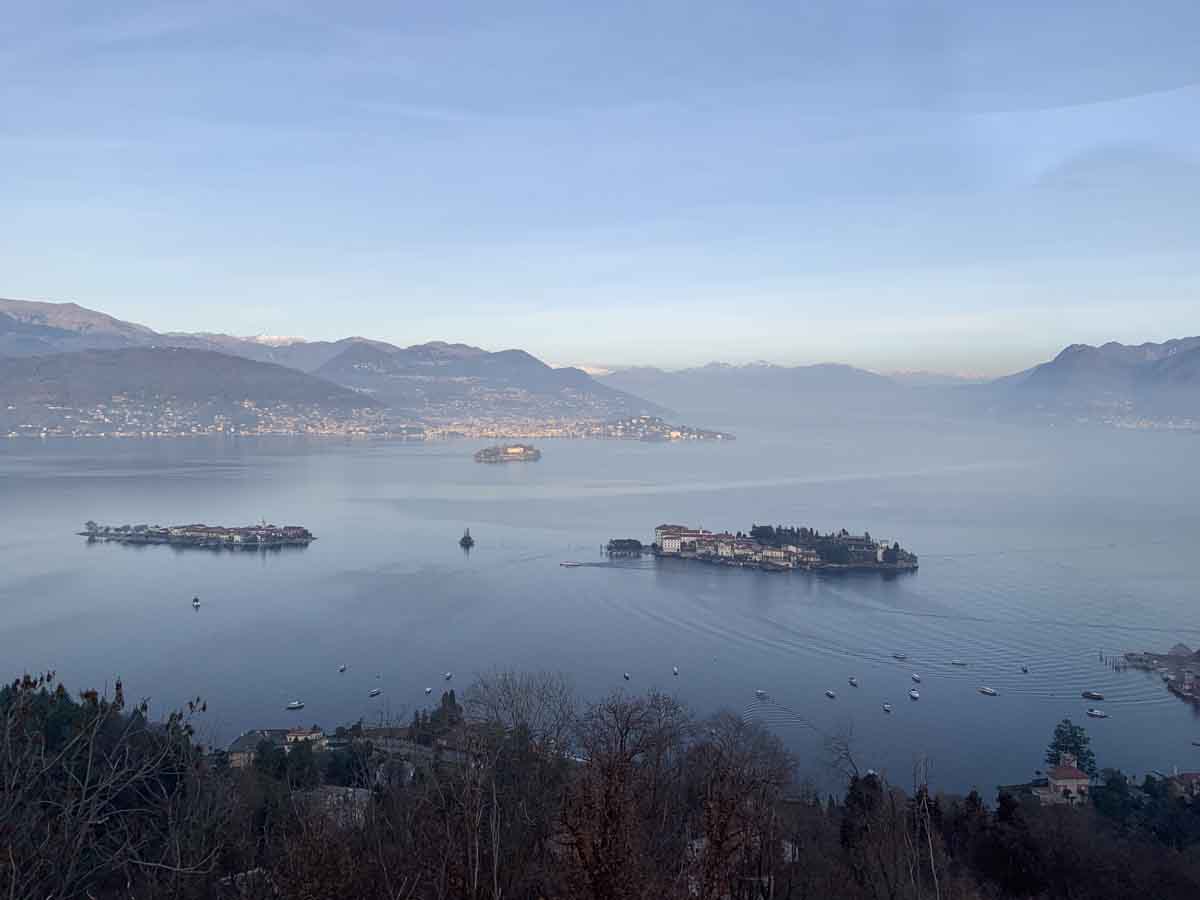
Lake Maggiore Practical Info
Like all the major Italian Lakes, Lake Maggiore is of glacial origin, with a long and narrow shape. It is located on the border between Lombardy and Piedmont – the eastern side of the lake belongs to Lombardy and the western to Piedmont, whereas the northern tip (including the towns of Ascona and Locarno) is part of Switzerland.
Lake Maggiore is Italy’s second-largest, after Lake Garda. It is known in Italian as ‘Lago Maggiore’, meaning ‘major lake’, because in the area there are several smaller lakes like the Lake of Varese, Cannobio, Mergozzo, as well as Lake Orta.
Lake Maggiore measures 65 km from north to south (making it the longest Italian lake) and its shoreline is 170 km long.
Best Time to Visit Lake Maggiore
Are you wondering what is the best time to visit Lake Maggiore? The lake is actually a year-round destination, with each season offering different experiences and reasons to visit. Winter can be foggy, but the temperature is usually mild, and it’s low season so you won’t have to worry about the crowds. Summer is great if you want to go swimming or hiking high in the mountains, but it can be very hot and busy with day trippers.
Autumn and spring are probably the best seasons to visit Lake Maggiore – in spring you can admire the stunning flower displays at Villa Taranto and the Borromean Islands, and autumn is ideal to go hiking at lower altitudes, pick chestnuts and admire the colourful autumn leaf display.
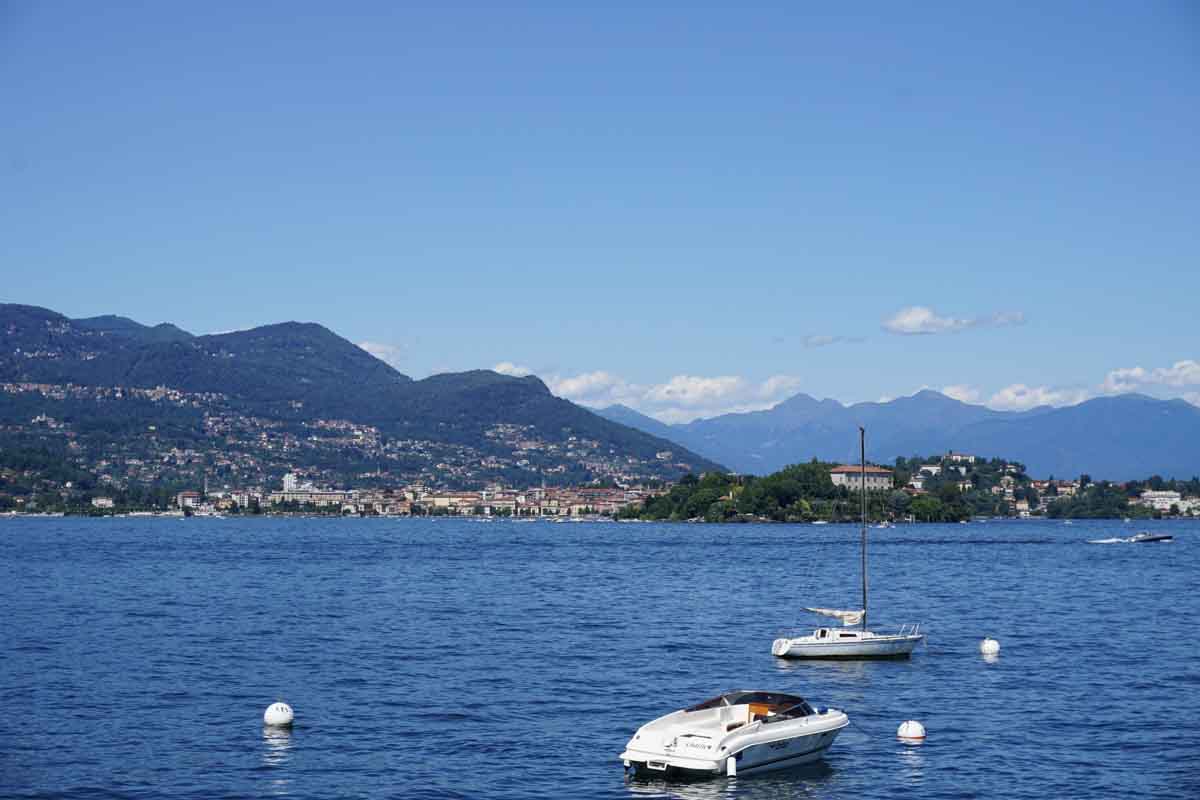
How to Get to Lake Maggiore From Milan
It’s very easy to get from Milan to Lake Maggiore by train. Both sides of the lake are served by railway lines – the eastern (Lombardy) by the Milan-Luino line, with hourly departures, and the western (Piedmont) by the Milan-Domodossola line, with some trains continuing to Brig in Switzerland and onward to Basel and Geneva.
To get around Lake Maggiore you can also make use of two ferry lines – one connecting the two sides, from Laveno to Intra (Verbania), and the second running from Arona in the south to Cannobio in the north, and vice-versa. You can get info on ferry schedules and tickets on the official website of Navigazione Laghi.
Can You Swim in Lake Maggiore?
Last question: can you go swimming in Lake Maggiore? In short, the answer is yes. Most Lake Maggiore towns will have a spiaggia (beach), but make sure you don’t swim more than 100/200 meters off the shore to keep a safe distance from speedboats and ferries. Generally speaking, the further north you go, the cleaner the water will be, especially away from the big cities.
The best place to swim in Lake Maggiore (in my opinion) is between Maccagno and Pino, close to the Swiss border.
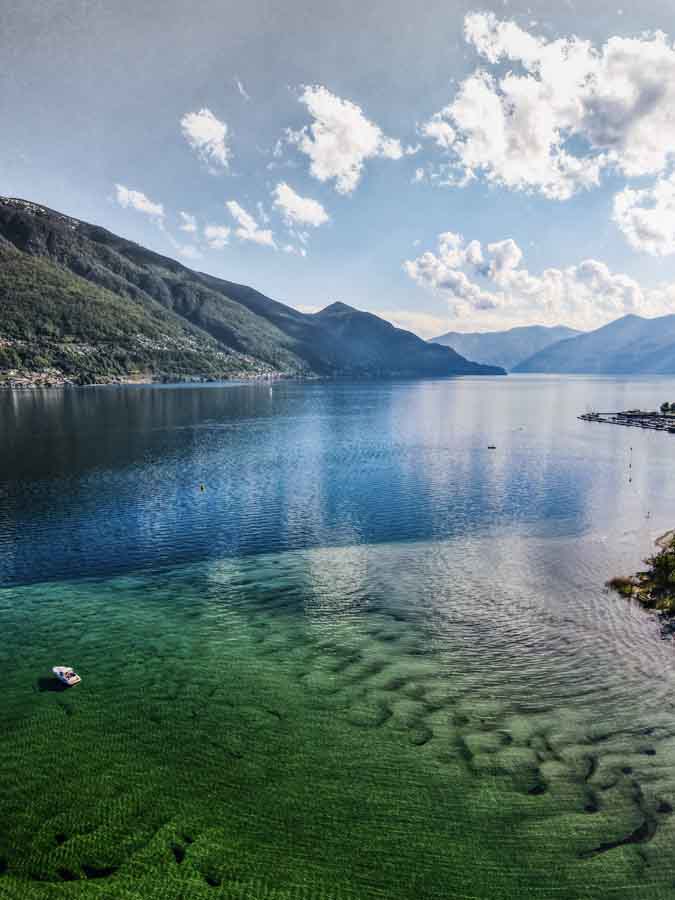
Best Towns and Things to See on Lake Maggiore
1) Verbania
Verbania is the biggest town around Lake Maggiore, sitting on its western side with a dazzling backdrop of green-covered mountains, perfect for hiking. Boasting a picturesque lake-front area that invites relaxing sunset strolls and an enchanting old town, Verbania is a must-visit when exploring Lake Maggiore.
The town was born in 1939 by the union of two municipalities, Intra and Pallanza, separated by the San Bernardino river.
The most beautiful site and most prominent attraction in Verbania, however, is the impressive Villa Taranto. A walk through the elegant gardens of the 19th-century villa, which are easily among the finest in Italy, will surely leave you in awe. The area’s microclimate allows a total of 20.000 plants, including tropical species to grow there, some of which will not normally survive in northern Italy’s cool climate.
The gardens are open between the 12th of March and the 1st of November. You can check out updated opening hours and prices here.
Verbania is well connected by ferry to the rest of the towns surrounding Lake Maggiore, making it an excellent base to explore the rest of the lake.
-Getting to Verbania from Milan: The Milan-Domodossola line travels along the western part of the lake, stopping at all main Lake Maggiore towns including Verbania-Pallanza. There are hourly departures from Milano Centrale and Milano Porta Garibaldi stations, and travel time is between 1 hour 15 and 1 hour 45.
2) Stresa
Stresa is a quaint lake resort town along Lake Maggiore. Recognized for its extravagant villas and Art Nouveau hotels lining the lakefront, Stresa still breathes cultivated air that has influenced the town since the late 19th century.
Add spectacular views of the enchanting Borromean Islands and you have the picture-perfect place for a slow-paced walk or having gelato on a bench.
If you are feeling adventurous, you can also walk under the cool shade of chestnut trees from Stresa to Belgirate on the 10-kilometer Chestnut Trail, especially beautiful in fall when the leaves turn yellow and orange.
-Getting to Stresa from Milan: Domodossola-bound trains also stop at Stresa station. There are hourly departures from Milano Centrale and Milano Porta Garibaldi, and travel time is between 1 hour 10 and 1 hour 30.
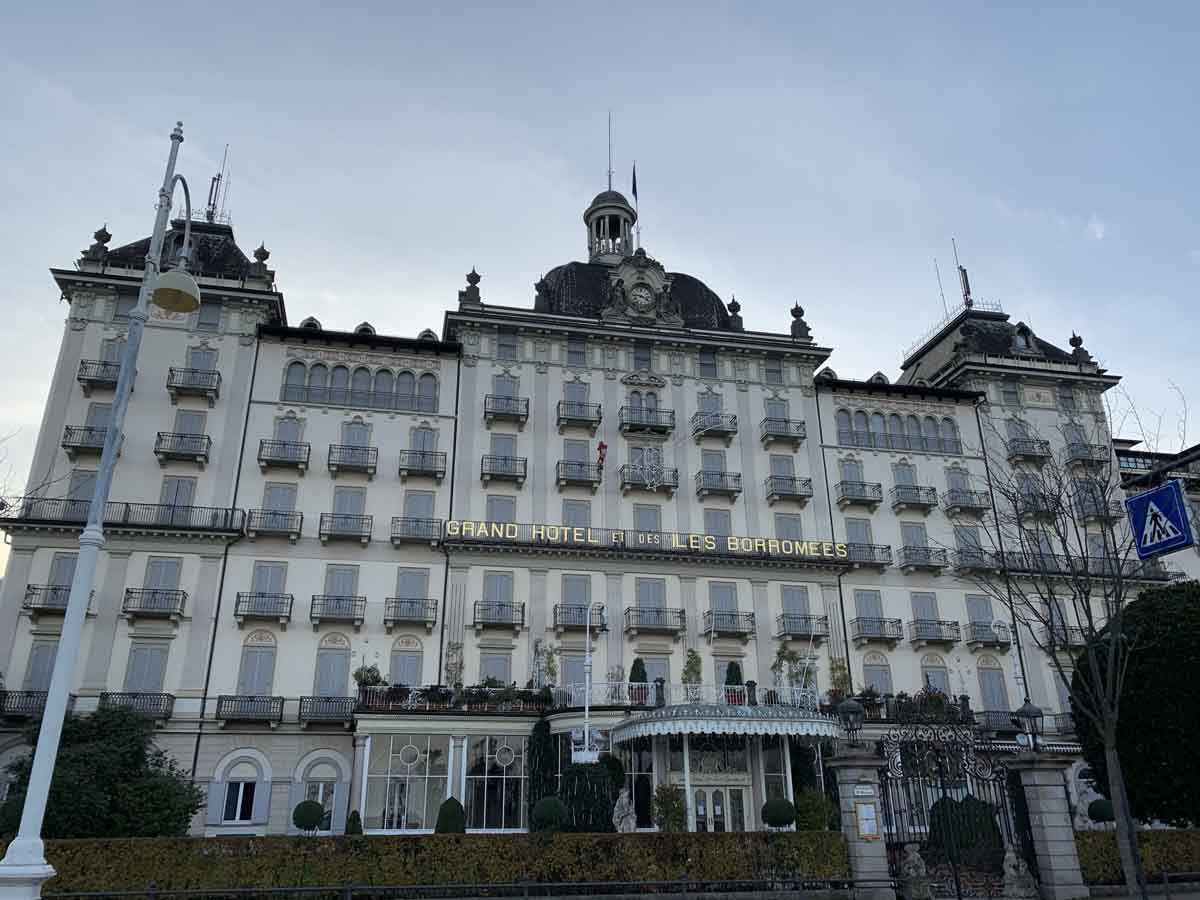
3) Baveno
Next to Stresa, you find the historical town of Baveno recognized by the cute “Maggie” sculpture and “Lake and Mountains” monument on the promenade. But there are also darker monuments like the 17 Martyrs Memorial and the War Memorial, both reminiscing the fallen in World War two.
However, looking further back in history, there are rustic areas like Domo and Baitone where you find some of the most ancient structures in Baveno, among them, the impressive St. Gervaso and Protaso Church that has sections dating all the way back to the 1050s.
Next to it, the 5th century Baptistery and the Way of the Cross complete the complex which is Baveno’s most prominent tourist attraction.
-Getting to Baveno from Milan: Baveno is the stop between Stresa and Verbania-Pallanza along the Milan-Domodossola line, so allow about 1 hour 15/1 hour 30 to get there.
4) Borromean Islands
One of the absolute best things to do on Lake Maggiore is to take a boat trip to explore the picturesque Borromean Islands. The small group of islands includes Isola Bella, Isola Madre, and Isola dei Pescatori. On top of that, the archipelago includes two small islets, Isolino di San Giovanni and the Rock of Malghera.
In the 16th century, the islands were bought by the Milanese Borromeo family which mostly owns the islands to this day. Since then, opulent palaces and glamorous gardens have been built and maintained and make out the main draw for tourists flocking to these captivating islands.
There are daily boat trips to the Borromean Islands from lakeside towns like Stresa, Baveno, and Verbania. Note that on top of the boat tickets, there is a fee once you get to the islands to enter the palaces.
PLEASE NOTE that Isola Bella and Isola Madre are closed between November and March, whereas Isola dei Pescatori can be accessed year-round (since people actually live there)
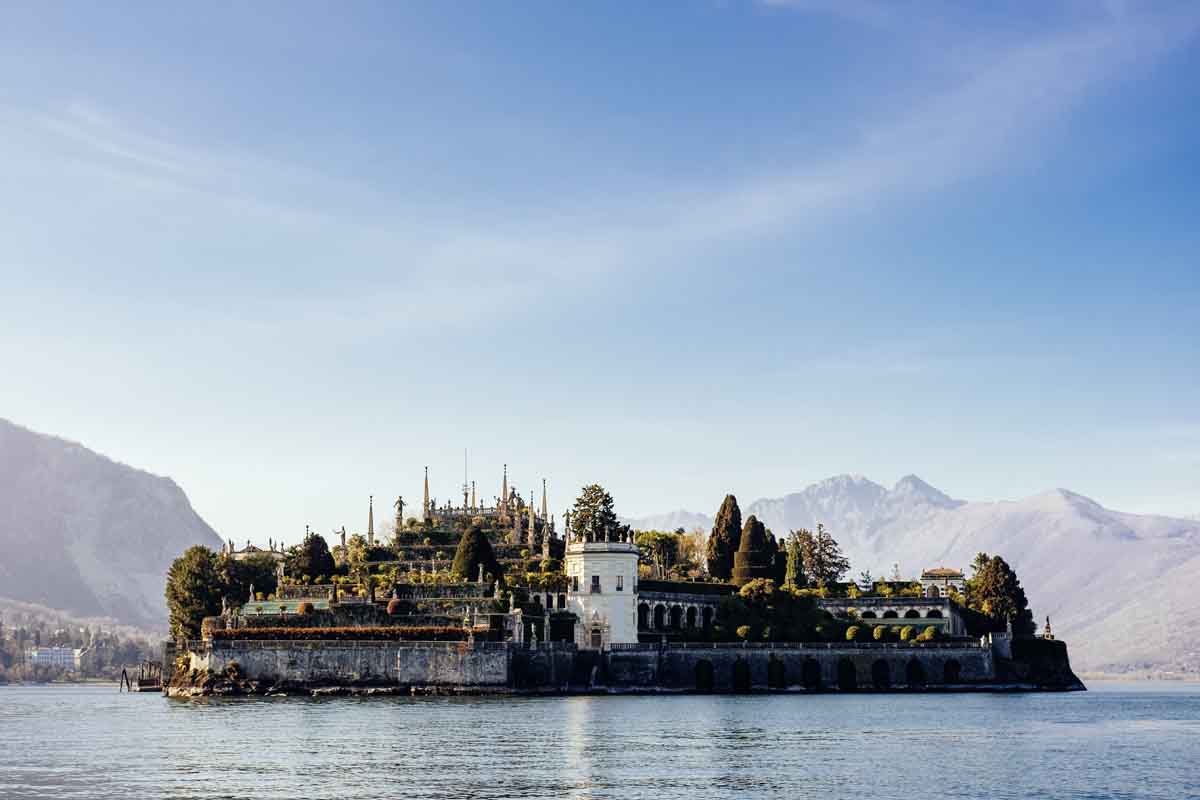
-Isola Bella
Isola Bella is one of the most astonishing islands of the archipelago. It took almost 400 years to transform a rock in the lake into a luxurious palace containing exquisite Baroque artwork and a garden like no other.
Of particular interest is the Galleria Berthier with a large collection of original paintings and copies of incredible masterpieces by famous painters like Raphael, Guido Reni, and Correggio. You should also pay attention to the Throne Room, Tapestry Room, and the spectacular Grottoes with walls covered in pebbles and shells.
The garden’s major masterpiece is the imposing monument of Teatro Massimo where vivid plants climb up majestic statues and obelisks in front of the neatly symmetrical garden.
-Isola Madre
Isola Madre is the largest of the islands and is a delightful balance between rich botanical gardens and splendid architecture. The palace on the island is decorated with unique furniture belonging to the Borromeo family. Pay special attention to the Reception Room, the Venetian Lounge, and the Pope’s Room with their prestigious details, wall paintings, and ancient artifacts.
However, the most reputable collection of the palace is the puppet theater used by the Borromeo family to entertain guests since the mid-17th century. In fact, this is the best-preserved puppet collection in the world – right there for you to see on Isola Madre.
To top this off, look out the windows and you will find million-dollar views of the splendid botanical gardens where rare plant species from across the globe live in harmony with perfectly groomed local plants creating one of the most outstanding gardens in Italy.
-Isola dei Pescatori
This is the only one of the Borromean Islands that is inhabited all year round by a little community of fishermen, and it is also the smallest. To take advantage of the tiny space on the island, homes are built on several storeys, with large balconies that are perfect for drying fish.
If you are looking for exquisite fish dishes for lunch, look no further. They also hold a little street market where you can buy gifts. Compared to the other islands, Isola dei Pescatori doesn’t have a palace or gardens to show for, but the quaint little community built on such a tiny space is super cute to witness.
Getting to the Borromean Islands from Stresa: There are frequent speedboats connecting Stresa to the Borromean Islands, as well as the islands to one another. You can pay separately for each leg you want to cover, get combo tickets including two or three islands, or even a day ticket for €16.90 that includes unlimited journeys between Stresa and the islands
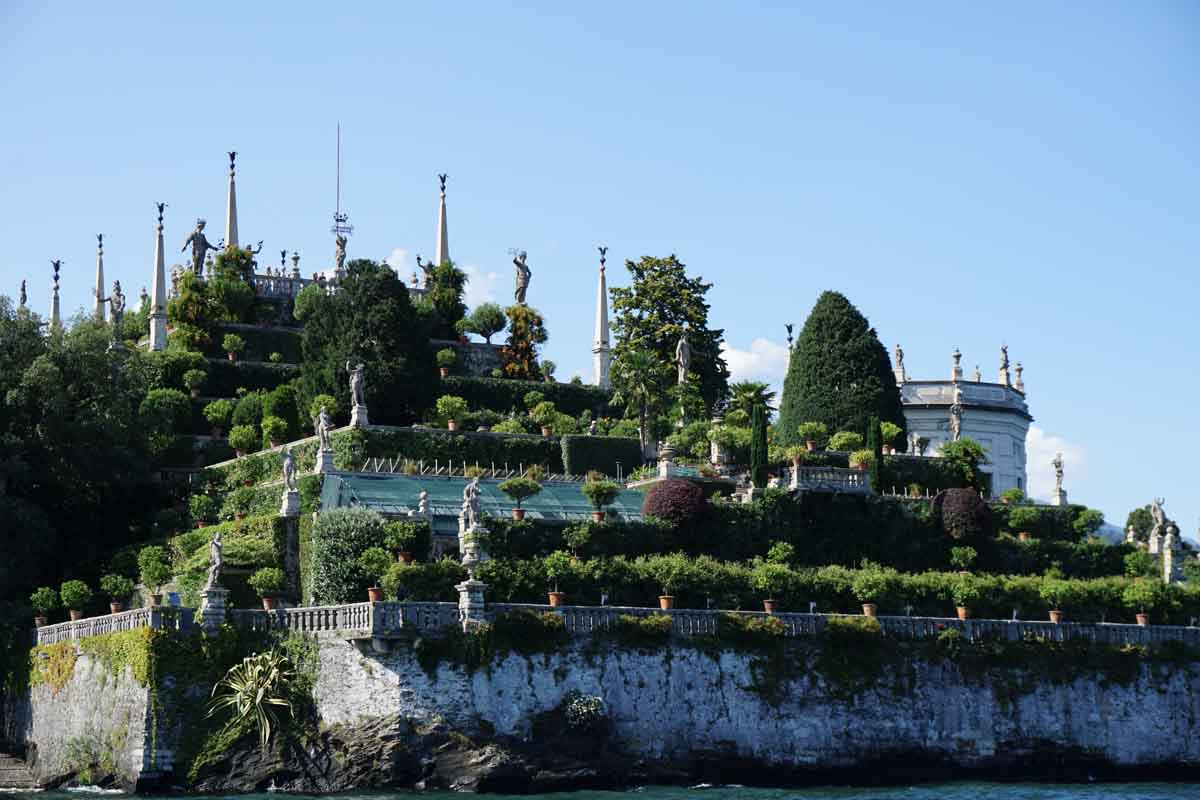
5) Mottarone
One of the top attractions on Lake Maggiore is the cable car from Stresa to the summit of Mottarone mountain at an altitude of 1491 meters. Unfortunately, it has been closed since 2021, after a tragic accident. There is currently no information on when it will re-open.
As an alternative, you can drive the curvy, scenic road to the top, which will provide sweeping views! It is also a famous climb for local road cyclists, but it’s quite challenging at 15 km long with an average gradient of 6.5%.
Halfway up, where the cable car normally stops for a change of gondola, you can take advantage and visit the Alpinia Gardens before continuing to the summit.
The adventurous will also find the 1.2-kilometer bob-slide on the top an exciting activity to top off their visit to the summit.
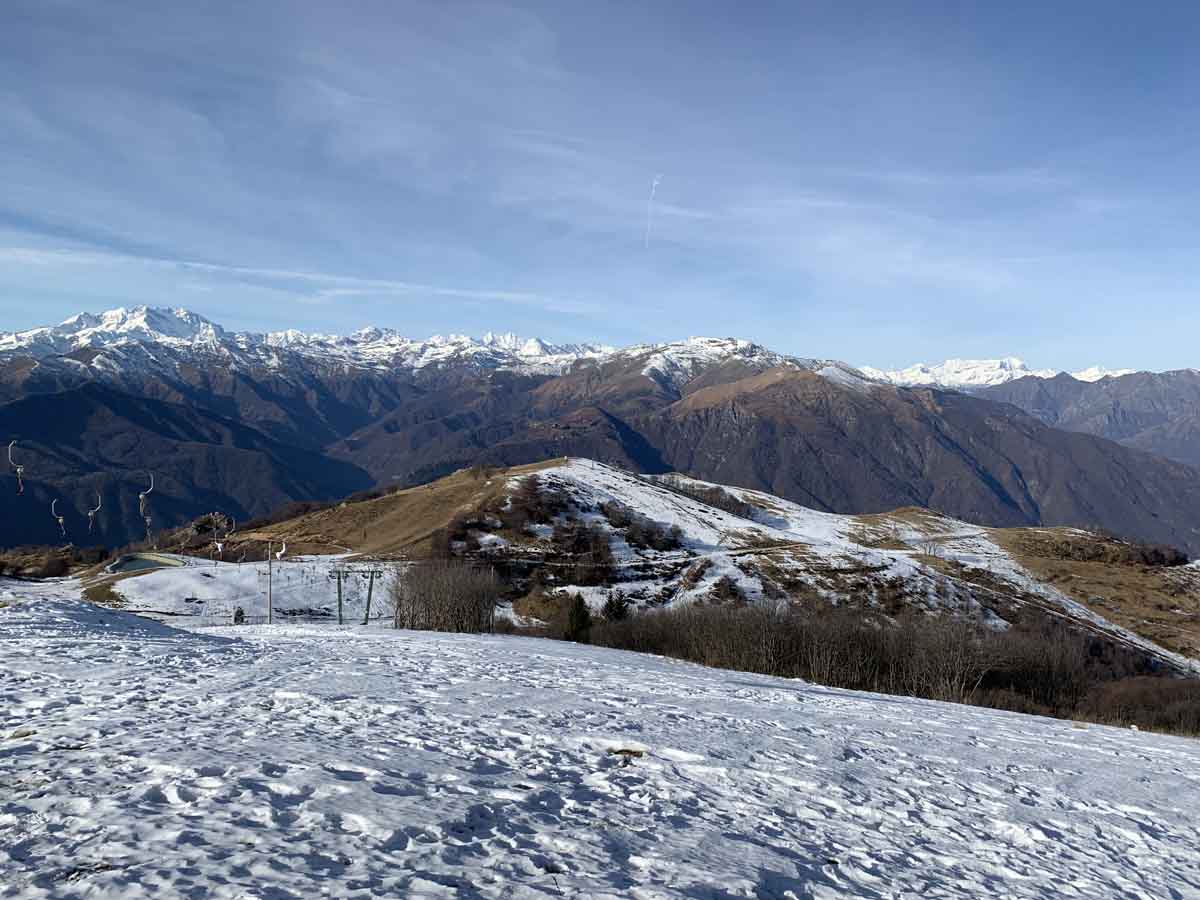
6) Laveno-Mombello
Picturesque Laveno-Mombello is yet another town in Lake Maggiore that is worth adding to your itinerary, particularly for two attractions.
Firstly, the impressive Hermitage of Santa Caterina del Sasso which was built in the 13th century catches your eye when coming by boat. Sitting on the steep rock side, there are 80 steps to reach it if you disembark by boat. You can also drive there, which will leave you on the top of 240 steps leading down to the hermitage – or you can ride the elevator. Note that the complex is only open in the morning.
The other attraction of Laveno-Mombello is the unique open-air “bucket gondola” taking you up to Sasso del Ferro where you get spoiled by yet another epic view of the lake.
-Getting to Laveno-Mombello from Milan: There are hourly trains from Milan Cadorna to Laveno-Mombello Lago, taking approximately 1 hour 40.
7) Luino
One of the best things to do on Lake Maggiore is to wander the cobblestoned streets of Luino where you will come by traditional markets. It is the birthplace of Piero Chiara and there is even a street in the town named after the writer.
Luino is famed for its emblematic pastel-colored houses and cute cafés and restaurants and makes for the perfect place to grab lunch while touring Lake Maggiore.
If you plan on exploring the Swiss part of the lake, Luino is the natural stop close to the border.
-Getting to Luino from Milan: There are a couple of direct trains a day from Milan Porta Garibaldi to Luino, taking 1 hour 40. Otherwise you’ll have to change trains in Gallarate, adding about 15/20 minutes to your journey time.
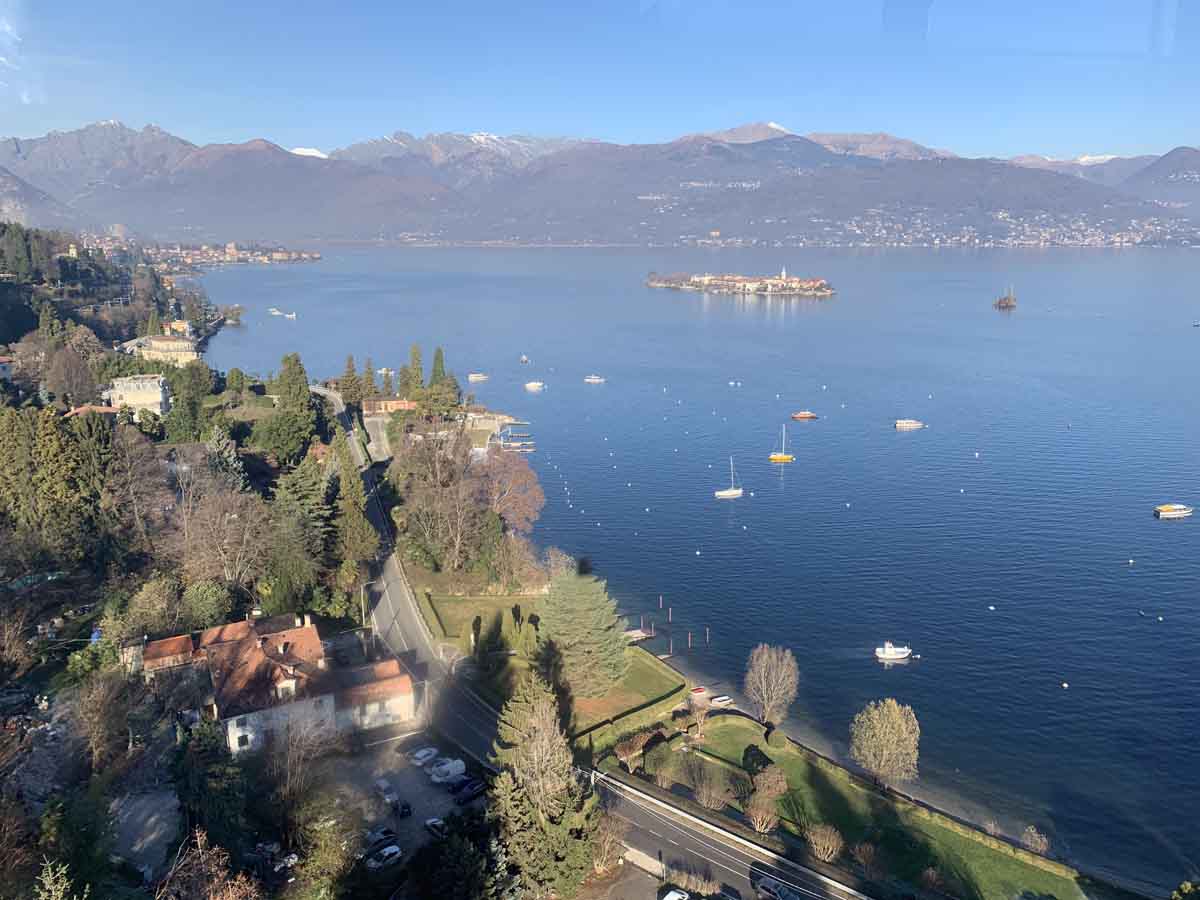
8) Angera
The quintessential town of Angera is mainly known for its hilltop castle, Rocca Borromeo di Angera. The castle complex includes structures from the 11th to the 17th centuries and splendid gardens.
Walk through opulent rooms decorated with exquisite paintings and frescoes. And do not miss out on the Doll and Toy Museum which also finds its place inside.
-Getting to Angera from Milan: First you’ll have to take a train to Sesto Calende – there are hourly departures from Milano Centrale and Milano Porta Garibaldi stations. At Sesto Calende, you can take a taxi or bus to Taino-Angera, just 10 km away.
9) Ascona
Ascona is an enchanting town on the Swiss side of Lake Maggiore, recognized by its colorful houses lining the lakefront and often referred to as “The Pearl of Lake Maggiore”.
Other than strolling along the romantic promenade, Ascona is a wonderful place to do holiday shopping. In the narrow cobblestoned streets in the old town, you will find all sorts of shops.
From Ascona, you can also take a boat to discover the Brissago Islands. Of particular interest is the colorful Botanical Gardens of Ticino where more than 1700 plant species from across the world make out one of the most romanticized gardens in Lake Maggiore.
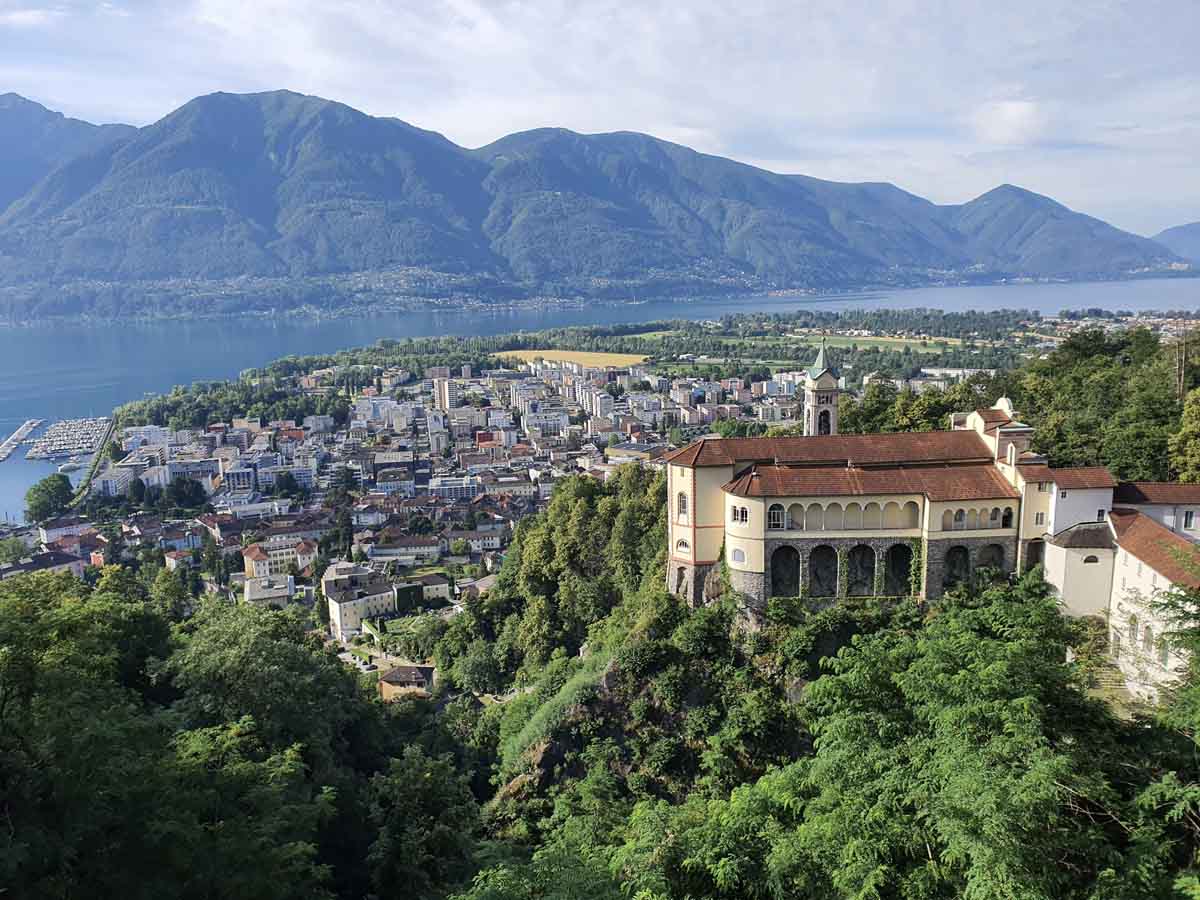
10) Locarno
Locarno is also on the Swiss side of the lake, famous for its Film Festival that takes place every August, and popular for its delightful microclimate. There are plenty of things to do in this enchanting town where narrow cobblestoned streets lined with pastel-colored houses take you to animated squares.
Visit the 12th-century Visconteo Castle, stroll through the romantic and colorful Parco delle Camelie, and hop on the funicular to the Sanctuary of the Madonna del Sasso which is a popular pilgrimage site. From there, you will also be rewarded with sweeping views of Locarno and the lake.
-Getting to Locarno from Milan: There are direct trains between Milano Centrale and Locarno every two hours, taking 1 hour 50 in total. Alternatively, you’ll have to catch a train to Lugano and switch to a Locarno-bound train. If you love scenic train journeys, you can travel between Domodossola and Locarno along the Ferrovia Centovalli, a popular journey in autumn and winter and one of the best things to do in Italy in November! Just book ahead as trains sell out in advance.
